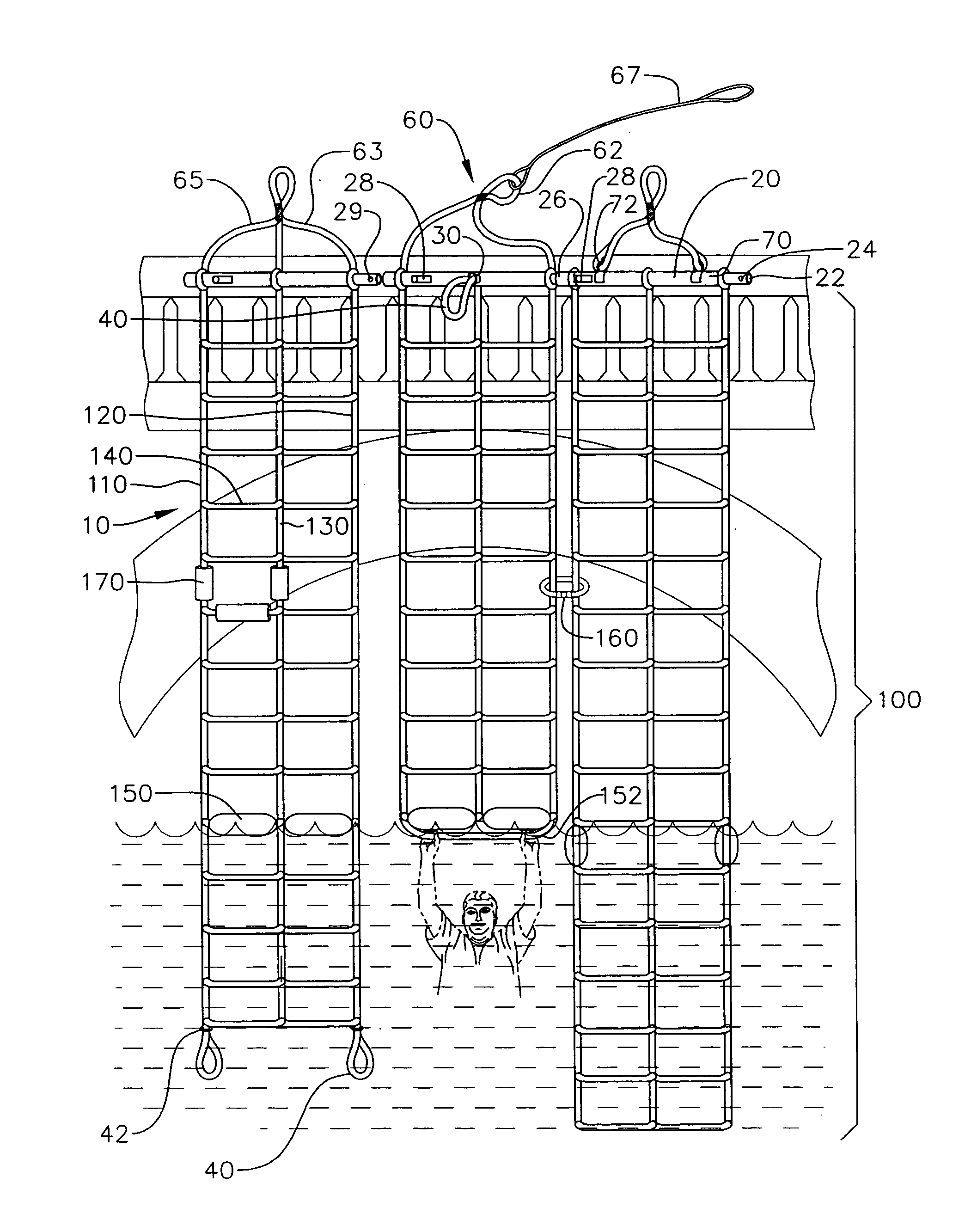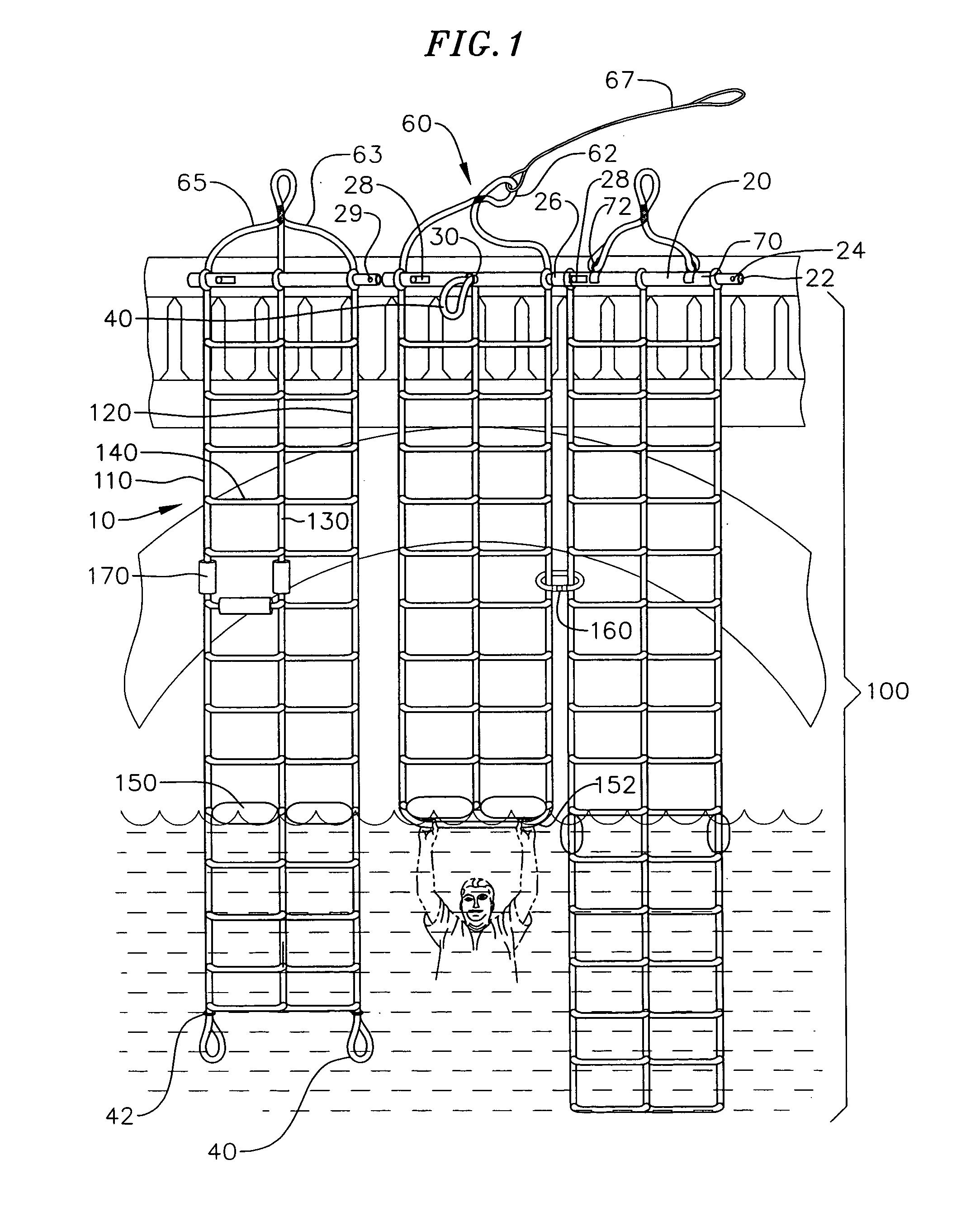Emergency rescues are inherently dangerous and difficult.
Such rescues, or attempted rescues, often take place in less than desirable weather conditions, and many times, it is the very nature of the weather that has caused the emergency.
Rescuing victims caught in such swift water is a difficult task.
Given the fast moving water, as well as the stormy weather conditions typical for such rescues, including rain and high winds, successfully implementing this method of rescue is difficult.
While in ideal calm weather conditions, a skilled rescuer may be able to direct the life preserver to an area very near the victim, in typical swift water conditions, such a rescue is very difficult.
The victim, often having substantial
exposure to the water, and likely diminished strength, agility and general motor skills due to the
exposure, must then grab the
rope or life preserver, or even worse, attempt to swim toward the life preserver, which is likely not a stationary target due to the wind and water current.
The actions required of both the rescuer and the victim for a successful rescue are extremely difficult to perform in swift water conditions.
Further, if such a rescue attempt is unsuccessful, the conditions often limit the number of rescue attempts that are possible.
Thus the second, and likely final rescue attempt must be made quickly before the victim is out of range of the rescuer's throw, adding the pressure of time to a situation already complicated by the elements.
Even if a rescuer is able to successfully land the life preserver in the immediate vicinity of the victim, such a rescue device does not facilitate easy engagement with a victim.
The victim has often been in the water for some time, and therefore fatigue may make even a short swim difficult.
Further, the wind and current will typically keep the life preserver from remaining stationary, making it even more difficult for a victim to catch up to the life preserver.
The
rope is relatively small, and typically not buoyant, and therefore difficult for a victim to either locate or take hold of.
Further, it is often not easy for one struggling to stay afloat to successfully grab the life preserver.
In the hazardous conditions which seem typical of many swift water rescue attempts, such a seemingly simple task may become difficult, resulting in a literal life and death struggle by the victim to reach the life preserver and hold on to it.
However, such ladders typically provide only a small rescue area, of only slightly larger area than the
rope and life preserver combination.
Such ladders typically provide no convenient method of rapid deployment, including quick yet secure attachment to a fixture.
Such rope ladders also do not present a large engagement area to a victim because the rope ladders are typically not buoyant, and are likely to twist and wrap together rather than remaining spread apart in a “ladder” form.
This implementation, while an improvement over the typical rope and life preserver, still provides a limited rescue area, and appears to suffer from the same problems, in that it appears that this device must also be accurately thrown out to the area of the victim, where the victim must then move to and take hold of the device.
In many instances, deploying such a device could not be done quickly, as it would involve getting two rescuers on each
bank of the body of water, and somehow getting the opposite ends of the net across the body of water.
In addition to the
prolonged exposure in the water, the danger of submersion during such operation, and the danger to the victim of further injury by debris in the water as the victim is dragged across the water, there is also the risk of the two rescuers lacking sufficient strength to pull the victim all the way to the side, especially if other debris has become entangled in the net.
While a smaller net may lessen the risk of entangling debris, it also lessens the probability of being able to catch the victim as well.
Conversely, while a larger net may increase the
odds of being able to catch the victim, it will also increase the
odds of entangling debris, possibly injuring the victim and requiring much greater force to pull in the net.
However, such a device appears to require extensive set up, and could not be rapidly deployed in an
emergency rescue type situation.
Further, this device, like several others, presents a large, contiguous net portion, making it likely that the net will catch large debris, creating additional danger to persons in the water.
Also, this device appears to require multiple persons to properly deploy and operate.
Further, as in the other devices, when the size of the net is enlarged to increase the chances of engaging the victim, the chances of engaging unwanted debris, which could damage the device, injure the victim, or both, are also increased.
Finally, this device also appears to require multiple persons to properly deploy and operate.
 Login to View More
Login to View More  Login to View More
Login to View More 


